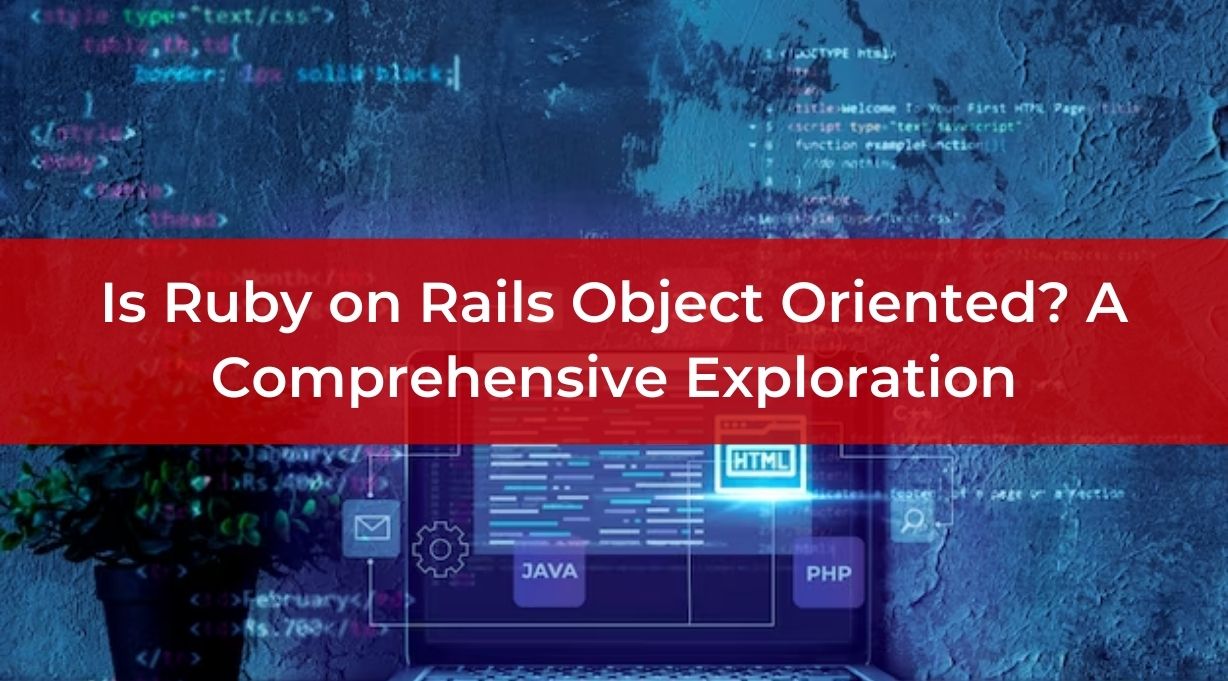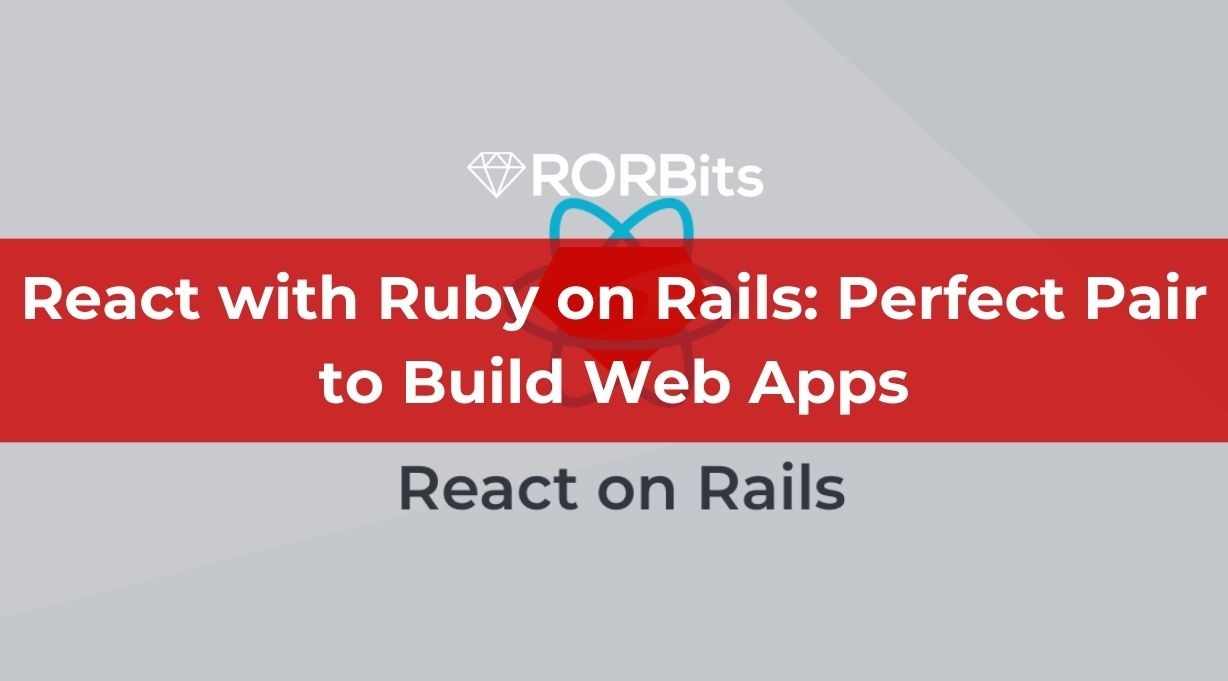In the vast realm of programming languages and web development frameworks, Ruby on Rails has carved a niche for itself.
While many developers praise its efficiency and versatility, one question looms large – Is Ruby on Rails truly object-oriented?
In this comprehensive exploration, we will delve into the fundamentals of Ruby on Rails to uncover its object-oriented nature.
Let’s Start!
Defining Object-Oriented Programming
Before we can dissect Ruby on Rails, let’s establish a solid understanding of Object-Oriented Programming.
The OOP paradigm for programming is based on the idea of objects, which are instances of classes.
Developers identified that as applications become large in size and complexity level, they generate difficulties to maintain. A small change in an application can easily develop errors in the entire program due to dependencies.
Developers needed a solution for data that could be updated and manipulated without affecting the whole coding of the program.
The solution of developing interdependence of data is to section off areas of code. And Object-Oriented Programming helps in that.
OOP promotes the organization of code into discrete, reusable components, making it easier to develop and maintain complex software systems.
Let’s know all the key principles on which Object-Oriented Programming Languages works!
Key Principles of OOP (Object-Oriented Programming)
To determine if Ruby on Rails aligns with OOP principles, we need to grasp the key tenets of this programming paradigm:

1. Encapsulation
OOP encourages encapsulation, where data and methods that manipulate the data are bundled together into classes. This helps in hiding internal complexities and ensures clean interfaces.
In simple terms we can say, Encapsulation is meant to hide functionality parts and make it disabled to the rest of the code base. It’s a type of data protection, due to the fact that data can’t be updated or manipulated without a clear purpose.
It is what establishes the limits of your application and enables your code to grow more sophisticated. Like many other OO languages, Ruby achieves this goal by generating objects and making interfaces (i.e., methods) available for interacting with them.
Another advantage of developing objects is that they permit developers to think on a new abstraction level. Objects can be given methods that define the behaviour the programmer is attempting to convey and are represented as real-world nouns.
2. Inheritance
Inheritance is a vital OOP concept. It allows new classes to be created based on existing classes, promoting code reuse and hierarchy.
In Ruby, a class inherits the behaviours of another class, known as the superclass, using the idea of inheritance. As a result, Ruby programmers now have the flexibility to create fundamental classes with high levels of reuse and smaller subclasses for more intricate, granular behaviours.
3. Polymorphism
Polymorphism enables the same method or function to exhibit different behaviour based on the context in which it is used. This fosters flexibility and extensibility in code.
For Example, As long as the argument has a move method that is compatible, we can provide any kind of argument to a method that invokes the move method on its argument. It’s possible that the object could symbolize a person, a cat, a jellyfish, or even a vehicle like a car or train. In other words, it enables objects of various types to react to the same method call.
The prefix “poly” means “many,” and the suffix “morph” means “forms.” OOP allows us the freedom to use previously created code for brand-new uses.
4. Abstraction
Abstraction is about simplifying complex reality by modelling classes based on their essential features. It reduces complexity and focuses on the necessary details.
Ruby on Rails: An Overview
What is Ruby on Rails?
An open-source web application framework created in the Ruby programming language is known as Rails or Ruby on Rails. Created by David Heinemeier Hansson in 2004, Rails has gained immense popularity for its ease of use and rapid development capabilities.

Rails is a full-stack framework and accessible in several operating systems like Windows, Mac OS X, and Linux. You can install Ruby on Rails like a pro with proper guidance and a few simple steps in your system. As Rails is an open source framework, you can access all its features.
This framework follows the model-view-controller (MVC) architecture and it has a large community of core features for frontend and backend requirements.
Ruby on Rails is known as developers’ choice because it is built on a set of predefined patterns and libraries which quickly implement various functionality like email sending or data reading from SQL databases.
For instance, Active Record is implemented by Rails as an object–relational mapper (ORM) pattern that allows programmers to interact with databases by using Ruby objects.
Active Record in Ruby on Rails is a core part of MVC architecture, and it’s responsible for managing Model behaviour. For example, Ruby on Rails Active Record works on four operations: Create, Read, Update, and Delete.
One more Rails functionality is known as app preloader usually called Spring. It assures that programmers can perform modifications and necessary updates to the app and can see the changes without starting background processes.
Developers also extend the framework with Ruby gems (managed by Bundler) in Ruby on Rails web development. A Gemfile file, which specifies the download source and the particular Ruby gems for the application, can be used to set up Bundler.
What Is The Major Use Of Ruby on Rails?
Ruby is a flexible programming language utilized in numerous branches of the software industry. The most notable Ruby use cases are listed below.
Web Development
Ruby’s popularity as a programming language is largely due to the Ruby on Rails framework, which transformed web development. Before the Rails framework appeared in 2005, programmers wasted too much time developing boilerplate code that was the same everywhere.
Due to its inclusion of all the tools a developer needs to create a scalable website, the Rails framework altered this. You can provide a straightforward command to create boilerplate code, a database model, or a suitable file structure.
These kinds of automations free developers from performing time-consuming, low-value tasks so they can concentrate more on writing the logic of a web app.
Static Site Generation
The website employs server-side code to create the HTML content it serves to your browser when you visit a regular web page. This indicates that the URL you visit has no HTML files attached.
Typically, serving web files to clients using this form of HTML production is not the fastest method. Use a static website generator like Ruby-based Jekyll, one of the most well-liked static site generators, as it is more efficient.
All of the web pages are created simultaneously by a static website generator using code. When you access the website, you will receive a static HTML file as a result of those pages living on a server.
Websites are now effective, safe, and simple to launch because of this. A static website generator is perfect for websites with rarely changing content.
Devops and Automation
Ruby is a well-liked programming language for website deployment, automation, and DevOps.
Think about the well-known Heroku web app deployment platform. Because it enables testing, deploying, and staging web apps without DevOps engineers, this platform has grown in popularity. Heroku used to exclusively support Ruby as a programming language.
Ruby is also used to create the well-known virtual machine management program Vagrant. Developers can run software designed for one operating system on another using Vagrant. A developer might convert a Linux-only service into a Mac-compatible format, for instance.
If you want to Hire Ruby on Rails Developers for better outcomes of your Rails project, then you should consider RORBits as your ROR development partner.
Web Services
Web servers are frequently built using the popular programming language Ruby. Ruby is supported by the well-known web application servers Passenger and Puma. These web application servers handle HTTP requests, control workflows and resources, and enable troubleshooting and monitoring.
Data Processing
Because of its accessible syntax, Ruby is a fantastic language for data processing. Other strong built-in features of Ruby include select, reduce, and map. These features make it simple to process, clean, and filter data.
Web Scraping
Ruby includes packages like Vessel that make it simple to parse web data. You may easily create Ruby programs using Vessel that crawl and download web pages.
You may then use Nokogiri, a well-liked Ruby library, to parse the scraped HTML information. With the help of this library, you can execute data analysis, such as creating a machine learning model based on crawled data, or prepare the collected data into new HTML or XML objects.
Ruby – A Pure Object-Oriented Language
Before we dive into Rails, it’s important to note that Ruby, the underlying programming language, is considered a pure object-oriented language. In Ruby, everything is an object, and it adheres strictly to OOP principles.
Does Rails Follow Suit?
Now, the critical question arises: Does Ruby on Rails, which is built on the Ruby language, maintain the same level of object-oriented purity?
1. MVC Architecture
Ruby on Rails adheres to the Model-View-Controller (MVC) architecture, a classic OOP pattern. Models represent data, views handle the presentation, and controllers manage user interactions. This clear separation of concerns aligns with OOP’s principles of abstraction and encapsulation.
2. ActiveRecord
Rails employs ActiveRecord, an Object-Relational Mapping (ORM) system. It allows developers to interact with databases using objects instead of SQL queries. This approach encapsulates database logic within objects, making it a prime example of encapsulation in action.
3. Gems and Modules
Rails is enriched with an extensive library of gems and modules. These are self-contained, reusable code units that embody OOP’s core idea of code reusability. By adding gems, developers can extend the functionality of their applications with ease.
To access all the features and benefits of Ruby on Rails framework in your Rails application, you can connect with any leading Ruby on Rails Development Company like RORBits. They will give you full assistance as per your needs.
Now, we will see key factors of Object-Oriented Programming Language with Ruby Programming.

Classes and Objects in Ruby
In Ruby Programming Language, Classes are defined as the ‘class’ keyword. Check out an example mentioned below:
class Dog
def bark
puts ‘Woof!’
end
end
fido = Dog.new
fido.bark # Outputs: ‘Woof!’
In the above example, ‘Dog’ is defined as the class, and ‘fido’ is an object of that class. The ‘Dog’ class has a method called ‘bark’. When ‘fido.bark’ is called, it performs the ‘bark’ method and outputs ‘Woof!’.
Encapsulation in Ruby
Ruby uses instance variables and methods to accomplish encapsulation. Instance variables can only be accessed from within the class and are specified with the ‘@’ sign. Here is an illustration of Ruby encapsulation:
class Dog
def initialize(name)
@name = name
end
def get_name
@name
end
end
fido = Dog.new(‘Fido’)
puts fido.get_name # Outputs: ‘Fido’
In this example, ‘@name’ is an instance variable of the class ‘Dog’, and the instance variable is encapsulated within the class. By using the ‘get_name’ method, it can be accessed.
Inheritance in Ruby
The ‘<’ symbol is used by Ruby to denote inheritance. Here, see an example to understand better:
class Animal
def initialize(name)
@name = name
end
def move
puts “#{@name} is moving.”
end
end
class Dog < Animal
def bark
puts ‘Woof!’
end
end
fido = Dog.new(‘Fido’)
fido.move #
Outputs: ‘Fido is moving.’
fido.bark # Outputs: ‘Woof!’
The class ‘Animal’ inherits the class ‘Dog’ that means ‘Dog’ class has all the accessibility to methods defined within the class ‘Animal’.
Polymorphism in Ruby
Ruby uses inheritance and the ‘duck typing’ principle (if it quacks like a duck, it’s a duck) to achieve polymorphism. Here’s an illustration:
class Animal
def initialize(name)
@name = name
end
def speak
“#{@name} says “
end
end
class Dog < Animal
def speak
super + ‘Woof!’
end
end
class Cat < Animal
def speak
super + ‘Meow!’
end
end
fido = Dog.new(‘Fido’)
whiskers = Cat.new(‘Whiskers’)
puts fido.speak # Outputs: ‘Fido says Woof!’
puts whiskers.speak # Outputs: ‘Whiskers says Meow!’
In this scenario, class ‘Animal’ has two subclasses ‘Dod’ and ‘Cat’ and they both are redefining the method ‘speak’. This action is called polymorphism.
Abstraction in Ruby
Ruby uses modules to implement abstraction, which resemble classes but cannot undergo instantiation.They group related methods that can be present in various classes.Here’s an illustration to understand easily:
module Movable
def move
puts “#{@name} is moving.”
end
end
class Animal
include Movable
def initialize(name)
@name = name
end
end
fido = Animal.new(‘Fido’)
fido.move # Outputs: ‘Fido is moving.’
In this instance, the ‘move’ method, which is part of the ‘Animal’ class, is present in the ‘Movable’ module.
At last, let us clarify for you the fact of OOP with Ruby on Rails framework.
Bursting the Myth: Is It 100% Object-Oriented?
While Ruby on Rails aligns closely with object-oriented principles, it’s important to note that it also incorporates procedural and functional elements.
This blend of paradigms provides developers with flexibility and allows them to choose the most suitable approach for a particular task.
Here are some points to consider when discussing the object-oriented nature of Ruby on Rails:
Ruby is Object-Oriented: Ruby, the language used to develop Rails, is indeed a fully object-oriented language. In Ruby, everything is an object, including numbers and classes, which are instances of the Class class.
Rails Architecture: Ruby on Rails is built using the principles of object-oriented programming (OOP). It heavily relies on OOP concepts like classes, objects, and inheritance. Models, views, and controllers in Rails are all represented as objects, and the framework encourages developers to follow OOP best practices.
Object-Relational Mapping (ORM): Rails uses ActiveRecord, an ORM (Object-Relational Mapping) that allows developers to interact with databases in an object-oriented manner. Database tables are mapped to Ruby classes, and records are treated as objects, making it easier to work with relational data.
Convention over Configuration: Rails promotes the DRY (Don’t Repeat Yourself) principle and uses a convention-over-configuration approach. This encourages developers to structure their code in an object-oriented way by following Rails conventions, which reduces the need for redundant code.
However, it’s important to acknowledge that not every aspect of a Rails application adheres strictly to object-oriented principles. Here are some factors that may challenge the idea of Rails being 100% object-oriented:
SQL Queries: While ActiveRecord abstracts away much of the database interaction, developers may still write SQL queries or use features like joins and aggregations that involve a more relational database approach.
Third-Party Libraries: Rails applications often incorporate third-party libraries and gems that may not strictly follow object-oriented principles. These libraries could introduce non-OOP code into the application.
Views: Rails views, which deal with the presentation layer, may include elements like HTML, JavaScript, and CSS, which are not inherently object-oriented.
Ruby on Rails is firmly rooted in object-oriented programming and encourages developers to follow OOP principles. However, it operates in a real-world ecosystem where some non-OOP elements, such as database queries and external libraries, may be necessary.
You can describe Rails as primarily object-oriented, but external factors sometimes prevent it from being 100% object-oriented in practice.
Conclusion
In this comprehensive exploration, we’ve delved into the heart of Ruby on Rails and its adherence to object-oriented principles. Although not purely object-oriented, Rails captures the essence of OOP and combines it with other paradigms to create a flexible and efficient web development framework.
So, the next time someone asks, “Is Ruby on Rails object-oriented?” you can confidently say that it merges the best of multiple worlds, providing a versatile and powerful approach to web development.
If you want to develop your app with Ruby on Rails and want great guidance to execute! Then you should connect with the Ruby on Rails Consulting Services Provider like RORBits. They will support you and guide you throughout the development process.
HAPPY RUBY ON RAILS!!!




